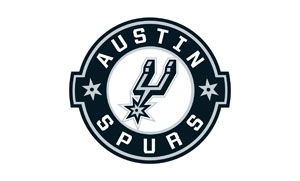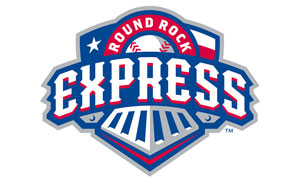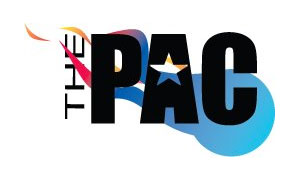At Sport Court of Austin, we specialize in building custom backyard pickleball courts that bring people together for years of play. We recently transformed a sloped backyard into a high-performance, multi-sport court.
From site preparation to the final paint coat, this blog walks you through the entire construction process, breaking down the key steps, challenges, and design decisions that make a high-quality pickleball court possible.
Site Preparation: Why Every Backyard is Different
Many people ask, “Why can’t you just give me a price for a sport court over the phone?”
The reason is simple—every backyard is different. While a yard might feel flat to the eye, slopes, soil conditions, and accessibility all impact construction costs. In this case, our Spicewood project had about 10 feet of elevation change, which required a strategic approach to grading and excavation.
Cut and Fill: The Key to Leveling the Court
To create a flat playing surface, we used a method called cut and fill—digging into the high side and redistributing soil to the low side. This approach is more cost-effective than hauling dirt off-site or building expensive retaining walls.
We also had to watch out for bedrock. If solid rock was found, we would need jackhammers to break it up—a process that can cost up to $1,000 per day in additional labor and equipment. Fortunately, this site had ideal excavation conditions, allowing us to move forward without extra costs.
Understanding Impervious Cover and Building Restrictions
Before building any sport court, it’s important to check local regulations regarding:
- Impervious cover limits (restrictions on how much of your property can be covered with hard surfaces)
- Easements and building lines (certain areas you must avoid)
- Critical root zones (protected trees that limit excavation)
- Underground utilities (gas, water, or electrical lines that need to be marked before digging)
A simple 811 “Call Before You Dig” request can prevent major headaches by ensuring no buried utilities interfere with the build.
Laying the Foundation: Concrete Work and Retaining Structures
With the site leveled, we moved on to pouring the foundation. For this project, we used a 5-inch post-tensioned concrete slab, reinforced with steel cables to minimize cracking over time.
Post-Tension Cabling: The Best Way to Prevent Cracks
Every concrete slab cracks. Post-tension cabling helps control where and how cracks form, keeping the surface smooth for long-term performance. The key to post-tensioned slabs is never cutting, coring, or drilling after the cables are tightened—doing so could cause serious damage or injury.
Building a Turn-Down Beam for Support
On the low side of the court, we constructed a turn-down beam—a reinforced concrete edge designed to hold back the fill material.
- For walls under 4 feet, a standard 8-inch beam is used.
- For walls over 4 feet, a 12-inch beam with extra rebar reinforcement is required.
Turn-down beams are a cost-effective alternative to full retaining walls, helping stabilize the court without excessive material costs.
Retaining Walls and Drainage: Protecting the Court from Water Damage
This court features a custom masonry retaining wall, which serves both as a structural support and a seating area for players. Drainage behind the wall is critical—without proper water flow, pressure buildup could cause cracks or even failure over time.
Painting and Surfacing: The Final Touches
After the concrete cured for 45 days, we prepped the surface for painting. This included:
- Acid washing the slab to remove residue.
- Applying a black acrylic resurfacer as a primer.
- Laying down two layers of color—dark green for the outer court and dove gray for the playing area.
The surface is coated with SportMaster acrylic paint, the official surface of USA Pickleball. This material provides optimal grip, durability, and playability, ensuring the court performs like a professional-grade facility.
Color Selection: Balancing Aesthetics and Performance
- Lighter colors reduce surface heat but can show more imperfections.
- Darker colors hide imperfections but may absorb more heat.
- This customer’s choice of dark green and gray strikes a great balance between function and aesthetics.
Multi-Sport Features: Basketball, Pickleball, and More
This court isn’t just for pickleball—it’s a multi-sport space. Here’s what we installed:
Adjustable Basketball Hoop
- Power Slam 60-inch system with tempered glass for gym-quality play.
- Adjustable from 10 feet (regulation) to 5.5 feet for younger players.
- Spring-assisted actuator makes height changes effortless.
Multi-Sport Net System
- Adjustable to four heights for pickleball, paddle tennis, badminton, and volleyball.
- Mounted in a removable sleeve, allowing for full-court basketball play.
LED Lighting
- Two 24,000-lumen LED lights provide clear night visibility.
- Spaced 15 feet off-center for balanced lighting.
- Designed for residential use—bright enough for play without excessive light pollution.
Net Fencing for Safety
- Polypropylene mesh fencing provides safety without harsh impact.
- Unlike chain-link fencing, it’s softer on players and prevents injuries.
- Open space on the uphill side allows balls to roll back naturally.
How Much Does a Backyard Pickleball Court Cost?
Every project is unique, but this 34’ x 60’ court came out to approximately $65,000. Here’s a cost breakdown:
- Site prep (excavation, tree removal, grading) – $9,000
- 5-inch post-tension concrete slab – $21,000
- Concrete pumping for long-distance pour – $1,500
- Turn-down beam for structural support – $9,000
- Acrylic sport surfacing – $9,000
- Basketball hoop – $2,600
- Multi-sport net system – $730
- LED lighting (2 poles, 24,000 lumens each) – $3,500
- Fencing (130 linear feet) – $2,500
- Freight, labor, and tax – $7,670
If your yard has less slope, costs may be $17,000–$18,000 lower. A standard 30’ x 60’ residential pickleball court with minimal site work can range from $35,000 to $50,000.
Important Considerations When Pricing a Court
- More slope = more excavation and concrete costs.
- Larger courts cost more in materials and labor.
- Additional features (lighting, fencing, basketball hoops) increase costs.
For an exact quote, a professional site evaluation is necessary. No two backyards are the same, so it’s important to get a plan tailored to your space.
Final Thoughts: A Backyard Built for Play
This project in Spicewood, Texas, turned a challenging sloped backyard into a dream multi-sport court. By carefully planning the site work, drainage, surfacing, and game components, we delivered a long-lasting, professional-quality court that the homeowners will enjoy for decades.
Whether you’re considering a pickleball-only setup or a multi-sport court like this one, Sport Court of Austin can help bring your vision to life.














